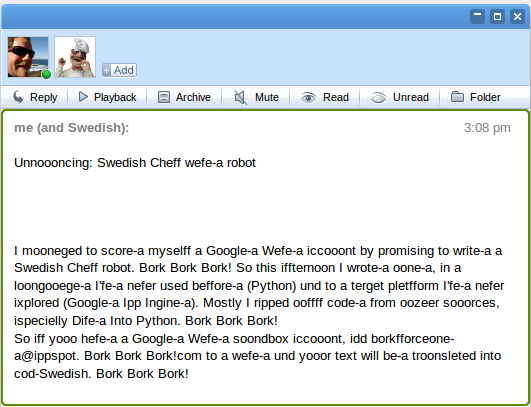So I'm a bit late, but I wanted to grab the latest Decoder Ring album. Logically, I started at their site, which certainly talks about the album. With no link to somewhere it can be purchased.
Next step Wikipedia to find out their label is "Inertia Music". Google that and find their site, search for Decoder Ring. Bingo, there's the album. Click to buy it and go through the registration rigmarole (here's a free tip: move the registration bit to after the credit card entry part and you'll convert more people). Get a download link and the problems begin.
zip warning: name not matched: /home/inertia/public_html/downloader/jquri3df12cgbr8e24496f84v6/01_DECODER_RING-SAME_OLD_PARADISE.mp3 zip warning: name not matched: /home/inertia/public_html/downloader/jquri3df12cgbr8e24496f84v6/02_DECODER_RING-THE_HORSE_AND_THE_HAND_GRENADE.mp3 zip warning: name not matched: /home/inertia/public_html/downloader/jquri3df12cgbr8e24496f84v6/03_DECODER_RING-ALL_THE_STREAMS_HAVE_LITTLE_GL.mp3 zip warning: name not matched: /home/inertia/public_html/downloader/jquri3df12cgbr8e24496f84v6/04_DECODER_RING-THE_INLAND_SEA.mp3 zip warning: name not matched: /home/inertia/public_html/downloader/jquri3df12cgbr8e24496f84v6/01_DECODER_RING-SAME_OLD_PARADISE.mp3 zip warning: name not matched: /home/inertia/public_html/downloader/jquri3df12cgbr8e24496f84v6/02_DECODER_RING-THE_HORSE_AND_THE_HAND_GRENADE.mp3 zip warning: name not matched: /home/inertia/public_html/downloader/jquri3df12cgbr8e24496f84v6/03_DECODER_RING-ALL_THE_STREAMS_HAVE_LITTLE_GL.mp3 zip warning: name not matched: /home/inertia/public_html/downloader/jquri3df12cgbr8e24496f84v6/04_DECODER_RING-THE_INLAND_SEA.mp3 Moved Temporarily The requested URL http://www.inertia-music.com/account/downloads/pkg/mydownloads.zip has moved here. Apache/2.2.3 (Red Hat) Server at www.inertia-music.com Port 443
Download the linked zip file, helpfully named mydownloads.zip which is a real aide memoire when it turns up on my desktop.
Unzip the included file and I get 9 tracks. Checking back on the site, there's actually 17 tracks on the album. Whoops. Looks like I've got only just over half what I paid for. Nice.
It gets better. The tracks are all dumped in the same folder and are all named IN UPPERCASE, helpfully truncated at 47 characters so track two becomes 02_DECODER_RING-THEY_BLIND_THE_STARS_AND_THE_W.mp3 Filename: 02_DECODER_RING-THEY_BLIND_THE_STARS_AND_THE_W.mp3. Brilliant, but I assume there's metadata inside the file that gives me the full name, right?
id3tool 02_DECODER_RING-THEY_BLIND_THE_STARS_AND_THE_W.mp3 Filename: 02_DECODER_RING-THEY_BLIND_THE_STARS_AND_THE_W.mp3 No ID3 Tag
That is just shockingly poor form. This means I have to manually go and find out the track names and enter them myself. The competition, torrent sites and the like, provides this kind of thing for free! So when I go and spend my hard earned on the legal alternative that gives some money to the musicians, my expectations are that I get at least as much as I would get for free!
PS: I'd prefer lossless audio like FLAC, if you want my real preference.






